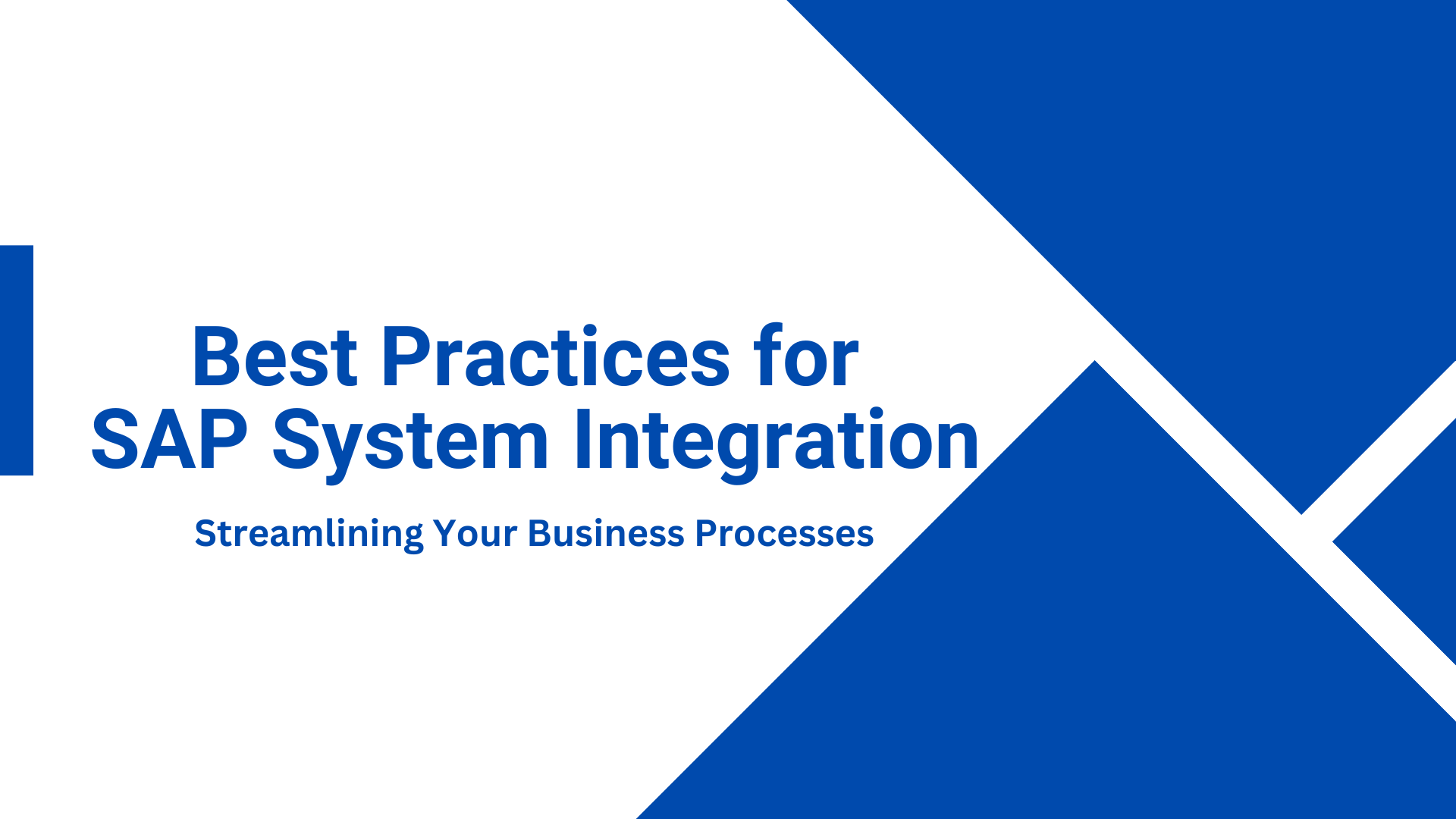Best Practices for SAP System Integration: Streamlining Your Business Processes
In today's interconnected business landscape, integrating systems is crucial for organizations looking to optimize their operations and gain a competitive edge World’s top-ranking companies are switching and implementing SAP software in their business. SAP (Systems, Applications, and Products) is a leading provider of ERP software solutions that help businesses streamline their operations, enhance productivity, and achieve their goals. Implementing SAP software can bring numerous benefits to businesses of all sizes and across various industries. Its implementation has emerged as a game-changer and enhanced decision-making, and drive growth within the organisation.

In this blog post, we will explore the key considerations and best practices for seamless SAP system integration. Here’s why companies around the globe are executing ERP software.
- 1. Define Integration Objectives:
Before embarking on any integration project, it is essential to clearly define your integration objectives. Identify the specific business processes, data, and systems that need to be integrated with SAP. Establishing clear goals will help guide the integration process and ensure that it aligns with your overall business strategy.
- 2. Assess System Compatibility:
Evaluate the compatibility of your existing systems with SAP. Identify any potential gaps or conflicts that may arise during the integration process. This assessment will help you determine the level of effort required for integration and allow you to proactively address any issues that may arise.
- 3.Plan Data Mapping and Transformation:
Data mapping and transformation are critical steps in SAP system integration. Understand the data requirements of both SAP and the systems being integrated. Map the data elements and define the necessary transformations to ensure seamless data exchange between systems. Implement data cleansing and normalization processes to maintain data integrity and accuracy.
- 4. Choose the Right Integration Approach:
Selecting the appropriate integration approach is crucial for successful SAP integration. Depending on your requirements and infrastructure, you can choose from various approaches such as point-to-point integration, middleware-based integration, or using SAP-provided integration tools like SAP PI/PO or SAP Cloud Platform Integration. Evaluate the pros and cons of each approach to determine the best fit for your organization
- 5. Implement Robust Security Measures:
Security should be a top priority when integrating SAP with other systems. Implement stringent security measures, including user authentication, data encryption, and role-based access control. Regularly monitor and update security protocols to protect sensitive data and prevent unauthorized access.
- 6. Test and Validate Integration:
Thoroughly test and validate the integration before going live. Conduct end-to-end testing of all integrated processes to ensure seamless data flow and functionality. Identify and resolve any issues or discrepancies before deploying the integration to production environments.
- 7. Establish Monitoring and Maintenance Processes:
Once the integration is live, establish monitoring and maintenance processes to ensure ongoing performance and reliability. Implement monitoring tools to track the integration's health, identify any potential bottlenecks or errors, and proactively address them. Regularly review and optimize the integration to accommodate changing business needs and system updates.
Conclusion
Effective SAP system integration can significantly streamline your business processes with Best apps Business Solution Pvt. Ltd to enhance data visibility, and improve decision-making. By following these best practices, you can ensure a smooth and successful integration that maximizes the value of SAP for your organization. As we are extending our SAP services across UAE, Kuwait, India. Connect with us for best digital transformation.
Remember, integration is an ongoing process, so continuously monitor and optimize your integration to adapt to evolving business needs and technology advancements.
If you’d like to discuss any aspect of the smart factory, please don’t hesitate to contact us.